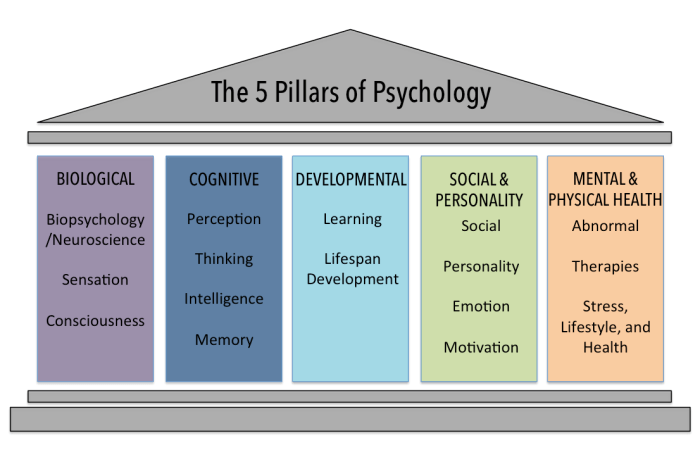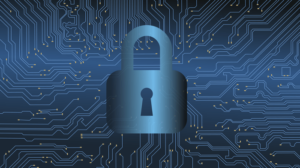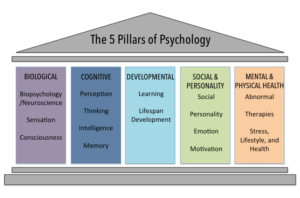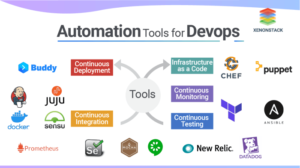
Delving into physical security systems for businesses reveals a landscape where safety meets technology in innovative ways. As businesses navigate an ever-evolving threat landscape, understanding the various types of physical security systems becomes crucial. From access control to surveillance cameras, these systems are designed to protect assets and ensure a safe working environment.
The integration of technology into physical security systems further enhances their effectiveness, allowing businesses to monitor and manage risks proactively. With a solid understanding of the components that make up an effective security plan, organizations can implement robust strategies tailored to their specific needs.
Understanding Physical Security Systems for Businesses
Physical security systems are essential for safeguarding business assets, employees, and sensitive information. These systems encompass a range of measures aimed at preventing unauthorized access, theft, and damage to property. With the rising threats of crime and cyber-attacks, investing in robust physical security measures has become a priority for organizations of all sizes.Different types of physical security systems provide varying levels of protection, each tailored to address specific security needs.
These systems typically include surveillance cameras, access control systems, intrusion detection alarms, and perimeter security devices. By integrating these components, businesses can create a comprehensive security strategy that effectively mitigates risks.
Types of Physical Security Systems
Understanding the different types of physical security systems is crucial for selecting the right combination tailored to your business needs. Here are the main types of physical security systems:
- Surveillance Cameras: These are deployed to monitor and record activities within and around the business premises. High-definition cameras with night vision capabilities enhance visibility and deterrence against criminal activity.
- Access Control Systems: These systems regulate who can enter different areas within a facility. They may include keycard systems, biometric scanners, or keypad entries to ensure that only authorized personnel gain access.
- Intrusion Detection Systems: These systems detect unauthorized entry through various means, such as motion sensors, glass break detectors, and door/window contacts. Alerts can be sent to security personnel or local authorities upon detection of an intrusion.
- Perimeter Security: Physical barriers like fences, gates, and bollards serve as the first line of defense against unauthorized access. Enhanced perimeter security can include motion-activated lights and security patrols.
- Environmental Design: This involves designing the layout and structure of the business premises to minimize opportunities for crime. Features might include clear sightlines, adequate lighting, and the strategic placement of security devices.
Components of an Effective Physical Security Plan
Creating an effective physical security plan requires careful consideration of multiple components that work together to form a strong defense against threats. Each component plays a vital role in maintaining a secure environment.
- Risk Assessment: Conducting a thorough risk assessment helps identify vulnerabilities within the business. This assessment evaluates potential threats, their impact, and the likelihood of occurrence to inform security strategies.
- Policy Development: Establishing clear security policies and procedures guides employee behavior and sets expectations for security practices. These policies should cover access control, emergency protocols, and incident response.
- Training and Awareness: Regular training for employees on security practices enhances overall safety. Awareness campaigns can educate staff about recognizing suspicious behaviors and following security protocols.
- Monitoring and Maintenance: Ongoing monitoring of security systems ensures they function effectively at all times. Regular maintenance checks and updates to security technology are essential for adapting to new threats.
Importance of Risk Assessment in Implementing Physical Security Systems
Risk assessment is a foundational step in developing a robust physical security system. By systematically evaluating the potential risks to a business, organizations can prioritize their security investments and implement targeted measures.
“Risk assessment enables businesses to focus their resources on the most critical vulnerabilities, ensuring that security measures are both effective and efficient.”
Employing a structured risk assessment process involves several steps, including identifying assets, evaluating threats, and assessing the impact of potential security breaches. Businesses can use the results to allocate resources effectively, enhance security measures, and reduce overall risk exposure. For example, a retail store might identify high-value merchandise as a target for theft, prompting the installation of additional surveillance cameras and security personnel during peak hours.
This proactive approach not only protects assets but also fosters a secure environment for employees and customers alike.
Integrating Technology in Physical Security

In today’s fast-paced business environment, the integration of technology in physical security systems is essential for protecting assets, personnel, and information. Modern threats require advanced solutions, moving beyond traditional methods to leverage innovative technologies. Understanding the differences between traditional and modern approaches helps businesses to implement effective security strategies tailored to their unique needs.Traditional physical security technologies primarily rely on hardware-based solutions, including locks, fences, and basic alarm systems.
These measures are often static and reactive, responding only after an incident occurs. In contrast, modern physical security technologies incorporate advanced tools like surveillance cameras with artificial intelligence, biometric access controls, and integrated security systems that connect various devices for real-time monitoring and response.
Comparison of Traditional and Modern Physical Security Technologies
The transition from traditional to modern physical security systems illustrates how advancements in technology can enhance safety measures.
- Surveillance: Traditional systems used analog cameras with limitations in resolution and functionality. Modern systems utilize high-definition IP cameras capable of streaming video in real-time, with features like motion detection and facial recognition.
- Access Control: Traditional access control relied on physical keys or simple keypads. Modern solutions employ biometric scanners, RFID cards, and mobile access, allowing for more secure and flexible entry points.
- Monitoring: In traditional setups, monitoring was often manual and reactive. Modern systems offer centralized control panels, remote access via mobile apps, and automated alerts, providing proactive security management.
- Integration: Traditional systems operate as standalone entities, while modern technology allows for seamless integration across various platforms, enabling a holistic security approach.
Role of Surveillance Cameras and Access Control Systems
Surveillance cameras and access control systems play a pivotal role in enhancing business security. They not only deter criminal activity but also provide valuable evidence for investigations. The effectiveness of these systems becomes apparent through their integration with modern technology.Surveillance cameras equipped with advanced analytics can differentiate between regular activity and potential threats, allowing for immediate response. For instance, a retail store with a smart camera system can alert security personnel when unusual behavior is detected, such as loitering near high-value items.Access control systems enhance security by ensuring that only authorized personnel can enter sensitive areas.
Biometric systems, which use unique physical traits for identification, add an additional layer of security that traditional key-based systems cannot provide. For instance, a corporate office may implement a fingerprint access system to restrict entry to sensitive departments, minimizing the risk of unauthorized access.
Guide on Integrating IoT Devices into a Physical Security System
Integrating Internet of Things (IoT) devices into a physical security system can greatly enhance operational efficiency and security. This approach allows for automated systems that can communicate with each other, providing a more comprehensive security solution.To effectively integrate IoT devices, consider the following steps:
- Assessment: Conduct a thorough analysis of existing security measures to identify areas needing improvement or technological upgrades.
- Device Selection: Choose IoT devices that complement the existing infrastructure, such as smart locks, connected cameras, and alarm systems that can be managed through a central app.
- Network Security: Ensure that the network used for IoT devices is secure. Use encryption and strong passwords to prevent unauthorized access.
- Integration Platform: Utilize a centralized security management platform that can integrate various IoT devices, enabling seamless communication and monitoring.
- Regular Updates and Maintenance: Keep the IoT devices and software updated to protect against vulnerabilities and enhance functionality.
“The future of physical security lies in the seamless integration of technology and traditional practices.”
Best Practices and Compliance in Physical Security
In the realm of physical security for businesses, adhering to best practices and compliance standards is vital for safeguarding assets and ensuring the safety of employees. With increasing threats ranging from theft to workplace violence, businesses must adopt comprehensive strategies that incorporate technology, employee awareness, and regulatory compliance.A robust physical security framework not only protects against external threats but also mitigates risks associated with internal vulnerabilities.
Integrating best practices can enhance the effectiveness of security measures and ensure compliance with industry standards.
Best Practices for Maintaining Physical Security
Establishing a strong physical security posture involves a variety of best practices that can be tailored to fit the unique needs of any business. These practices help in creating an environment that deters unauthorized access and protects valuable assets.
- Conduct Risk Assessments: Regularly evaluate vulnerabilities in the physical environment through comprehensive risk assessments to identify potential security gaps.
- Implement Access Control Systems: Use key cards, biometric scanners, or PIN codes to restrict access to sensitive areas, ensuring that only authorized personnel can enter.
- Monitor with Surveillance Systems: Deploy CCTV cameras to monitor key locations, which can act as both a deterrent and a tool for incident investigation.
- Establish Clear Security Policies: Develop and communicate clear security policies to all employees, outlining their roles and responsibilities in maintaining security.
- Regularly Update Security Technology: Stay current with technological advancements in security systems to enhance effectiveness and address emerging threats.
Industry Standards and Regulations Related to Physical Security
Compliance with industry standards and regulations is critical for businesses looking to implement effective physical security systems. Various guidelines help ensure that physical security measures align with best practices and legal requirements.
- ISO 27001: This international standard provides a framework for establishing, implementing, maintaining, and continually improving an information security management system, which includes physical security elements.
- ASIS International Standards: ASIS offers various guidelines focused on security management practices that enhance physical security measures for organizations.
- Occupational Safety and Health Administration (OSHA) Regulations: OSHA mandates safe working conditions, requiring businesses to implement physical security measures to protect employees.
- General Data Protection Regulation (GDPR): Though primarily focused on data protection, GDPR emphasizes the importance of physical security for protecting personal data.
Significance of Employee Training and Awareness in Physical Security
Employee training and awareness are paramount in the success of physical security strategies. Engaging employees in security protocols fosters a culture of vigilance that significantly enhances overall security posture.
- Regular Training Sessions: Conduct training sessions to educate employees on security policies, emergency procedures, and the use of security equipment.
- Awareness Campaigns: Launch awareness campaigns to keep security top of mind, using newsletters, posters, and workshops to reinforce the importance of security practices.
- Incident Reporting Protocols: Provide clear guidelines on how to report suspicious activities or security breaches, empowering employees to act swiftly.
- Simulated Emergency Drills: Organize drills to ensure employees are prepared for various security scenarios, such as intrusions or evacuations.
Last Point

In summary, as businesses face increasing risks, investing in comprehensive physical security systems is not just advisable; it’s essential. By understanding the available technologies and best practices, organizations can create a secure environment that not only protects assets but also fosters a culture of safety and awareness among employees. Ultimately, a well-implemented security strategy serves as a foundation for business resilience and growth.
Essential Questionnaire
What are the key components of an effective physical security system?
A comprehensive physical security system typically includes access control, surveillance cameras, alarm systems, and a well-defined security policy.
How often should businesses conduct risk assessments?
Businesses should aim to conduct risk assessments annually or whenever significant changes occur in their operations or the surrounding environment.
What role does employee training play in physical security?
Employee training is vital as it equips staff with the knowledge to recognize and respond to security threats, fostering a proactive security culture.
Are traditional security measures still effective?
While traditional measures like locks and guards remain important, they are often enhanced by modern technologies like surveillance and IoT for better effectiveness.
Can IoT devices improve physical security?
Yes, IoT devices can enhance security by providing real-time monitoring and alerts, allowing businesses to respond quickly to potential threats.





